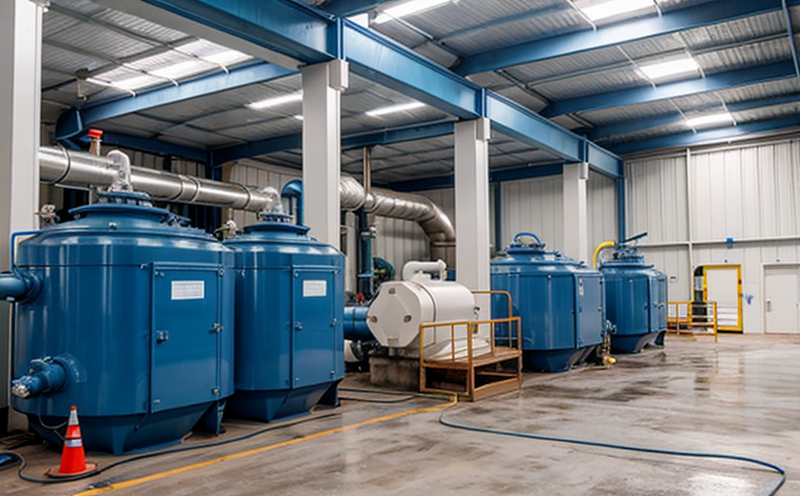EPA Method 1603 E. coli Analysis of Treated Effluents
The EPA Method 1603 E. coli analysis is a critical component in the regulatory framework for assessing the microbiological quality of treated effluents, particularly focusing on the presence and concentration levels of Escherichia coli (E. coli). This method is pivotal for ensuring compliance with U.S. Environmental Protection Agency standards that govern water discharge from facilities into receiving waters.
EPA Method 1603 is designed to evaluate the effectiveness of wastewater treatment processes and ensure that treated effluents meet stringent microbial quality thresholds before they are discharged into aquatic environments. Compliance with this method is mandatory for industries such as municipal sewage treatment plants, industrial facilities, and others engaged in water pollution control.
The analysis targets the presence of E. coli because it serves as an indicator organism, reflecting the potential for the presence of other harmful pathogens that may be present but are not always detectable by conventional methods. The method is based on ISO and ASTM standards, which provide a comprehensive approach to assessing water quality.
The testing process involves several key steps: sampling of the treated effluent, preparation of dilutions, inoculation of culture media, incubation under controlled conditions, and final colony count. The method specifies stringent criteria for both positive and negative controls, ensuring accurate and reliable results.
The importance of EPA Method 1603 cannot be overstated in maintaining ecological balance and public health standards. By adhering to this protocol, facilities can demonstrate their commitment to environmental sustainability and regulatory compliance. This is particularly relevant for sectors such as municipal wastewater treatment, industrial manufacturing, and agricultural runoff management.
Our laboratory ensures that all tests are conducted with precision and adherence to EPA guidelines, utilizing state-of-the-art equipment and experienced personnel. This guarantees accurate results that meet or exceed regulatory requirements.
The method's significance is further underscored by its role in preventing the spread of waterborne diseases and protecting aquatic ecosystems from contamination. By ensuring that treated effluents do not pose a risk to public health, this testing process plays a crucial role in safeguarding both human health and environmental integrity.
Why It Matters
The significance of EPA Method 1603 E. coli analysis extends beyond mere compliance with regulations; it is integral for protecting the environment and public health. The presence of E. coli in treated effluents can indicate the potential for pathogen spread, which poses significant risks to human health and aquatic life.
The method's role in ensuring water quality is critical because it helps identify areas where further treatment may be necessary. By detecting even small quantities of E. coli, facilities can take corrective actions to enhance their wastewater treatment processes. This proactive approach not only ensures regulatory compliance but also contributes to the overall sustainability and reliability of water discharge systems.
For industries such as municipal sewage treatment plants and industrial facilities, this testing is essential for maintaining a balance between environmental protection and operational efficiency. By adhering to EPA Method 1603, these entities can demonstrate their commitment to responsible stewardship of natural resources and public health standards.
- International Acceptance: The method's rigorous protocols are widely accepted across various countries, making it a global standard in wastewater treatment evaluation.
- Regulatory Compliance: Adhering to EPA Method 1603 ensures that facilities meet stringent regulatory requirements and avoid costly penalties.
The importance of this testing cannot be overstated. By providing accurate, reliable results, our laboratory helps clients maintain compliance with environmental regulations while contributing to the broader goal of sustainable water management.
International Acceptance and Recognition
- United States: The method is a mandatory requirement for wastewater discharge into U.S. waters, as mandated by the EPA.
- European Union: While not directly required, many EU member states adopt EPA standards to ensure consistency and comparability of water quality.
- Australia: The method is recognized for its stringent quality control measures in assessing treated effluents.
- New Zealand: Similar recognition for its role in ensuring safe discharge into aquatic environments.
The global acceptance of EPA Method 1603 underscores its importance as a benchmark for wastewater treatment effectiveness. By adhering to this method, facilities can ensure that their treated effluents meet the highest international standards and are acceptable across various regulatory frameworks.
Competitive Advantage and Market Impact
The ability to consistently pass EPA Method 1603 E. coli analysis offers significant competitive advantages in the market. Compliance with this method not only ensures that a facility meets all regulatory requirements but also enhances its reputation for environmental responsibility and operational reliability.
By demonstrating compliance, facilities can attract more business opportunities from environmentally conscious clients who prioritize sustainable practices. This can translate into increased market share, improved brand image, and enhanced stakeholder trust.
- Client Satisfaction: Clients appreciate the confidence that comes with knowing their suppliers are meeting rigorous environmental standards.
- Operational Efficiency: By identifying and addressing potential issues early in the process, facilities can optimize their operations to reduce costs and improve efficiency.
The method's global recognition also opens doors for international business opportunities. Facilities that meet EPA Method 1603 standards are more likely to be considered for projects in countries with stringent environmental regulations, thereby expanding their market reach and potential profitability.





